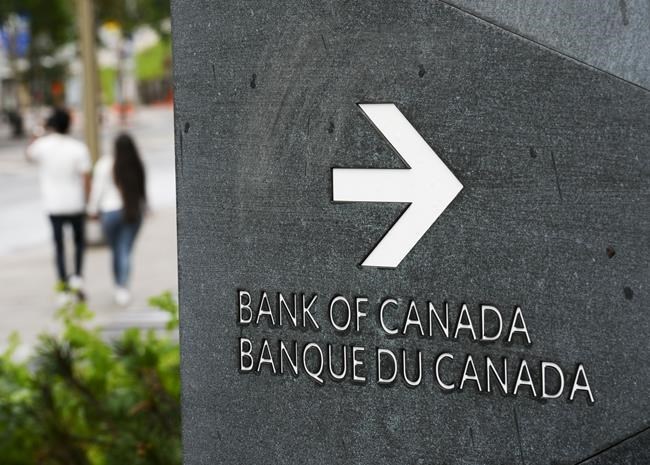OTTAWA ŌĆö Canadians are seeing the cost of borrowing rise rapidly as the Bank of sa╣·╝╩┤½├Į takes historic action to slow the soaring of prices, having learned costly lessons from history when central banks let inflationrun rampant.
The Bank of sa╣·╝╩┤½├Į recently raised its key interest rate by a full percentage point ŌĆö the largest single rate hike in more than two decades ŌĆö as it tries to cool domestic demandand bring down inflation expectations.
An unusual movefor an unusual time: inflation reached a 39-year-high of 8.1 per cent in June, after years of a low, stable and predictable consumer price index in sa╣·╝╩┤½├Į.
But throughout much of the 20th century, price stability wasnŌĆÖt a given in the Canadian economy.
TD chief economist Beata Caranci said inflation today might feel especially challenging because Canadians have been shielded from inflation volatility for decades.
"We haven't had this challenge in a while," Caranci said.┬Ā
sa╣·╝╩┤½├ĮŌĆÖs last experience with high inflation came in two waves during the 1970s and 80s and hit a peak of 12.9 per cent in 1981.
In 1973, adverse weather sparked a global food shortage and an embargo on OPEC oil drove energy prices up. Several years later, a second energy crisis was brought on by the Iranian Revolution in 1979.
And while the drivers of high inflation are relatively similar ŌĆö global circumstances pushing up food and energy prices ŌĆö inflation today isnŌĆÖt expected to climb as high or be as persistent. ┬Ā
That's because the approach of central banks is now markedly different, said Western University economics professor Stephen Williamson. ┬Ā
"A big difference now is sort of a strongly held notion that it's mostly the jobof the Bank of sa╣·╝╩┤½├Į to look after inflation control,ŌĆØ said Williamson. ŌĆ£In the 70s, that wasn't true.ŌĆØ ┬Ā
For the bulk of the 20th century, central banks had not yet developed strong and effective mandates to maintain a stable reading ofinflation, Williamson said. Instead, they tried to control inflation through the money supply.
Economists at the time believed inflation could be managed by controlling the amount of money circulating in the economy. However, central banks found this tactic to be unsuccessful.┬Ā
Caranci said another reason why the Bank of sa╣·╝╩┤½├Į was slow to raise rates was that central banks were historically hesitant to hinder economic growth through higher interest rates.
TD senior economist James Orlando wrote an analysis in April that compared high inflation today to the 1970s and 80s. He said the Bank of sa╣·╝╩┤½├Į was slow to raise interest rates in the 1970s, and by the time the bank acted, it was too late. ┬Ā
"Inflation expectations adjusted upwards, resulting in even higher inflation over the subsequent years,ŌĆØ said Orlando.┬Ā
Interest rates in the 1980s eventually rose to as high as 21 per cent.
In 1982, the Bank of sa╣·╝╩┤½├Į announced it would no longer target the money supply and instead would turn its focus to interest rates.┬Ā
sa╣·╝╩┤½├Į's turbulent experience with high inflation also led to the Bank of sa╣·╝╩┤½├Į's mandate to maintain a target inflation rate. In 1991, the Bank of sa╣·╝╩┤½├Į and the minister of finance agreed on an inflation-controlled framework to guide monetary policy.
"We believe the Bank of sa╣·╝╩┤½├Į has learned from history," Orlando wrote in his comparison of inflation in the two eras.
This time around, sa╣·╝╩┤½├Į's central bank is stillfacing criticism for taking too long before starting to raise its key interest rate. By comparison, though, the Bank of sa╣·╝╩┤½├Į has acted faster and more forcefully.
ŌĆ£We're hearing different dialogue coming out of the central bank today that there is a willingness to sacrifice growth, and to even have the unemployment rate rise,ŌĆØ said Caranci. ┬Ā
In its latest rate announcement on July 13, which surprised economists who were expecting a three-quarters of a percentage point hike, the central bank's message was clear: it's not afraid to move aggressively to clamp down on skyrocketing inflation.
At the same time, economists like David MacDonald from the Canadian Centre for Policy Alternatives have used history to warn raising rates too quickly can trigger a recession, as it did in the 80s.
However, Caranci said there are important differences between the two time periods, including a different makeup of the economy and the existence of safeguards such as mortgage stress tests.┬Ā
ŌĆ£The challenge with doing comparisons of periods, especially when you get that far back in history is, there's been so many differences at play,ŌĆØ said Caranci.
In May, Bank of sa╣·╝╩┤½├Įdeputy governor Toni Gravelle delivered a speech that focused on why comparisons between stagflation in the 1970s and the current inflation environment were "unjustified," citing strong economic growth, a tight labour market and historically low unemployment.┬Ā
And of special importance, Gravelle said today's Bank of sa╣·╝╩┤½├Į is equipped with the policy tools it needs to rein in inflation.┬Ā
"Since the 1990s, we and other central banks around the world have had success with inflation targeting," he said. "And we are committed to bringing inflation back to target."
This report by The Canadian Press was first published July 21, 2022.
Nojoud Al Mallees, The Canadian Press



